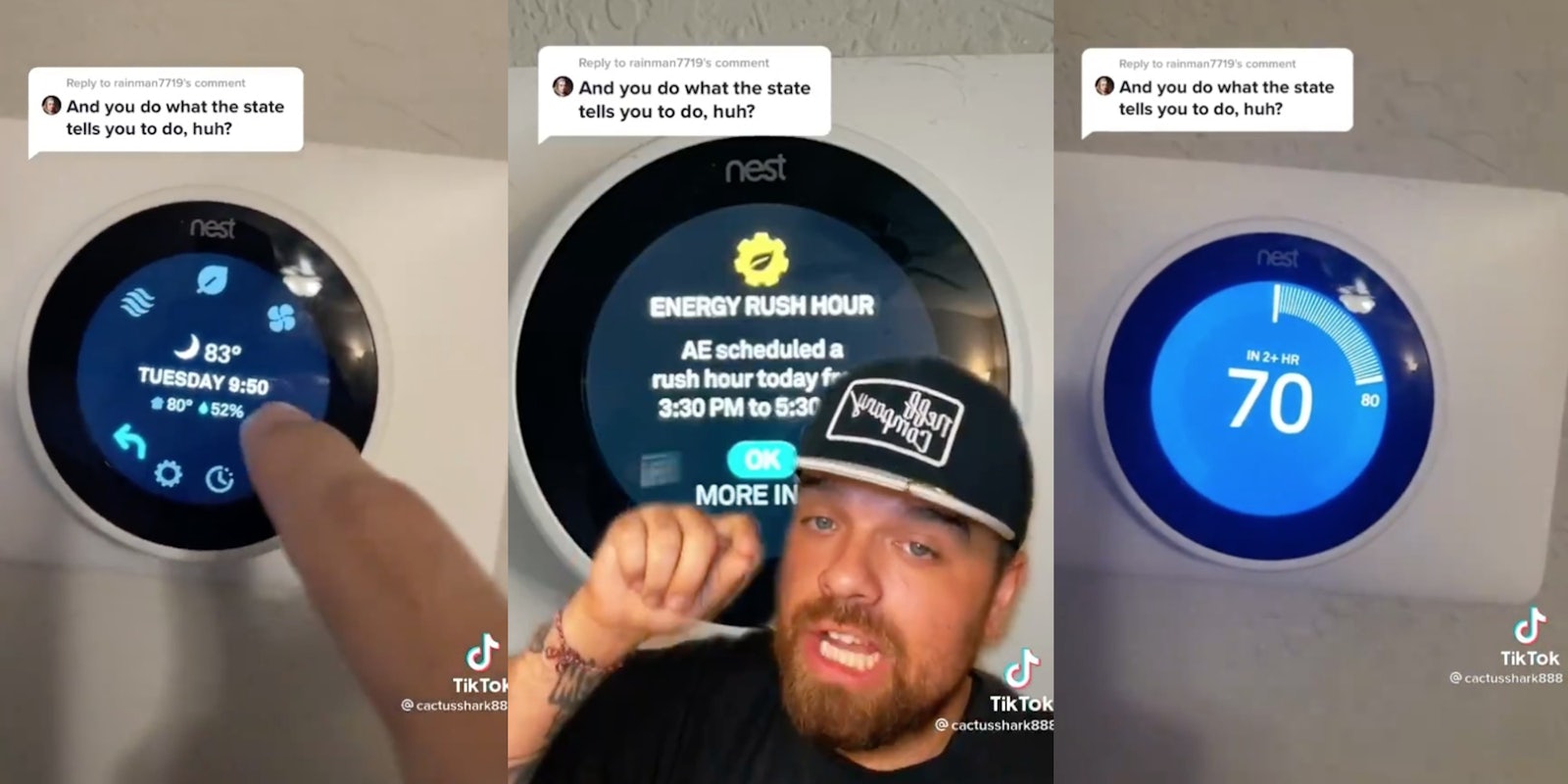Power companies in Texas are remotely raising temperatures inside of some customers’ homes amid the state’s ongoing energy shortage.
Houston resident Brandon English, whose home has an internet-connected smart thermostat installed, was shocked to learn of the practice after his wife and infant daughter “woke up sweating.”
Speaking with KHOU 11, English stated that despite his wife turning down the temperature before taking a nap with their 3-year-old child, the temperature in their home rose significantly.
“They’d been asleep long enough that the house had already gotten to 78 degrees,” English said. “So they woke up sweating.”
English, who expressed concerns over the potential for his young child to overheat and dehydrate, said it wasn’t long after that his wife received a text alert noting that the thermostat had been remotely altered during a three-hour “energy saving event.”
English appears to have enrolled the thermostat, operated by the company EnergyHub, in a program known as “Smart Savers Texas,” KHOU 11 notes. The program, which customers have to opt-into, allows power companies to remotely adjust thermostats when energy demands are high in exchange for an entry into a sweepstakes. Other power companies have been known to offer customers reduced billing costs for entering similar programs.
Upon realizing the details of the program, English says he immediately unenrolled: “I wouldn’t want anybody else controlling my things for me.”
The English family is not the only one in Texas that seems to be experiencing such issues. The Daily Dot came across multiple videos on social media from individuals who claimed that their thermostats were being altered remotely.
In those cases, residents with Google’s Nest thermostats received messages noting that their temperatures had been adjusted during an “Energy Rush Hour.”
The issue comes shortly after the Electric Reliability Council of Texas (ERCOT), the state’s power grid manager, called on customers to reduce their energy usage and adjust their thermostats to 78 degrees or higher.
Serious questions continue to be raised about the resilience of the privately-run grid in the wake of the devastating snowstorm last February that resulted in widespread power outages.
This article has been updated.


